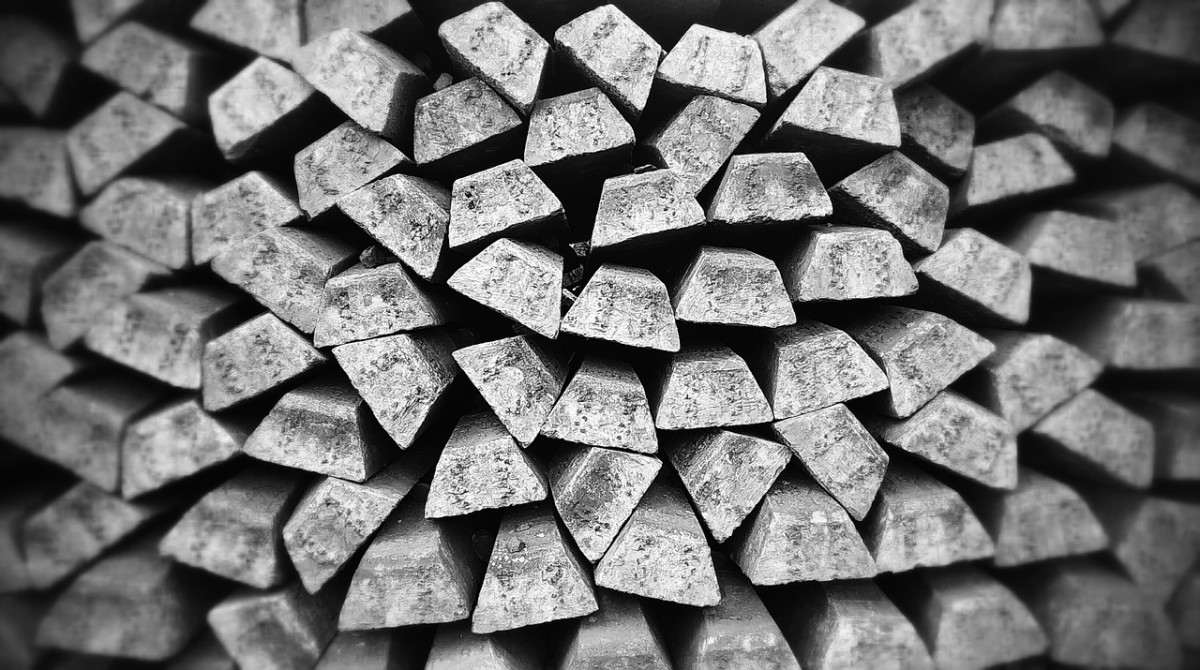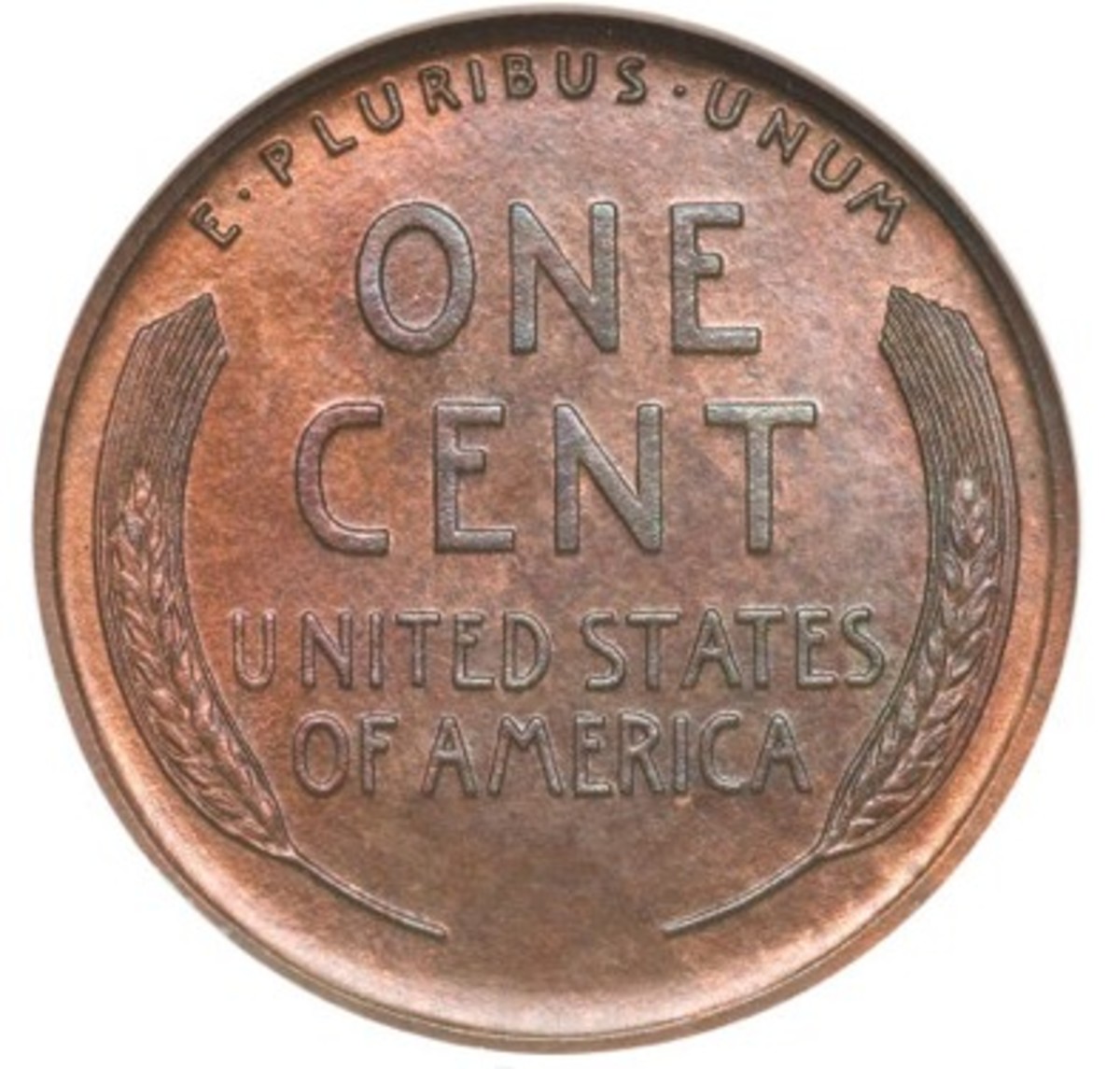Silver - from Ore to Metal
In this brief article historical background of silver, practices of mining of important silver containing ores like galena (lead ore), chalcopyrite (copper ore), and sphalerite ( zinc ore), and extraction and purification processes of silver have been described. Amalgamation and cyanidation processes for the recovery of silver along with native gold from the ores have also been described.
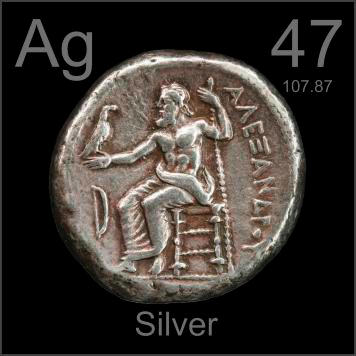

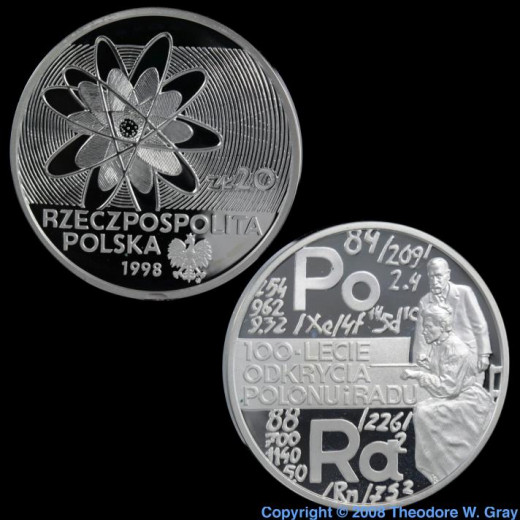
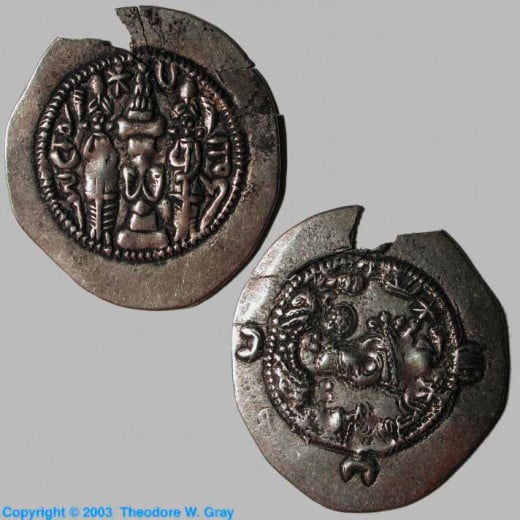
Introduction
The word Silver is originated from the Anglo-Saxon word Seolfor or Siolfur. The chemical symbol, Ag, derives from the Latin argentum and Sanskrit argunas for bright. Silver has been known since ancient times and silver coins existed even before the time of Christ. Photographs of the silver coins before the Christrian era and other interesting photographs of silver coins are reproduced below.
It is mentioned in the book of Genesis, and slag heaps found in Asia Minor and on the islands of the Aegean Sea indicate, that silver was being separated from lead as early as the 4th millennium BCE.
Silver was considered to be more precious than gold in pre-Christian era. It had a religious significance in certain civilizations and still it is used in articles of worship. Prior to the 16th century, silver was available only to the church and extremely wealthy persons. The term Georgian Silver (1714-1830) is used for the Georgian period, and not for the style, in which the most ornate pieces of silverware were produced. Gadroon motif of silver was prevalent in Georgian period. This is a decoration of recurring shapes or colors carved into the furniture. A typical English silver pot with gardoon motif is shown above.
Year 1847 is considered to be a landmark in the silver industry. Roger brothers (William, Asa, and Simeon), whose names are synonymous with fine silver plate, are considered to be the pioneers of silver industry. With several years of experimentation and without having any knowledge of electroplating they were successful in making coin silver articles such as forks and spoons.
High quality silver was termed as sterling since 1200's. The coins of England, at that period, contained only a little silver and thus decreased its value. The coins made by the merchants of the Hanseatic League, a group of trading cities in Northern Germany, contained large proportions of silver. These coins were termed as Easterlings to distinguish them from the then existing low-silver alloy coins of England. The modern English word "Sterling", referring to high quality silver, originates from the word "Esterling".
History of Mining and Extraction
Silver was discovered about 5800 years back. In nature, silver generally occurs in minerals of copper, lead, or zinc. About 4000 years back silver-bearing lead ores were mined and smelted to obtain impure lead-silver alloy. This impure alloy was then refined by cupellation. A cupel is a porous pot of clay or bone ash. In the process of cupellation, the impure alloy is exposed to a high temperature in a blast of air in a cupel. The cupel absorbs lead, copper, tin, etc. due to its porous nature and the droplets of solidified silver are left on the top. In Greece, silver-lead deposits were mined from 500 BC to 100 AD. Spanish mines were also considered as the major source of silver. By the 16th century, Spanish conquistadores (conquerors) discovered and developed silver-rich mines in Mexico, Bolivia, and Peru. Thus South and Central America became the largest silver producing areas in the world. A large deposit of silver was discovered in Nevada in mid-19th century. From then until the 20th century, United States of America was considered as the world's largest producer of silver. Again it was surpassed by Mexico and South America (in particular Peru).
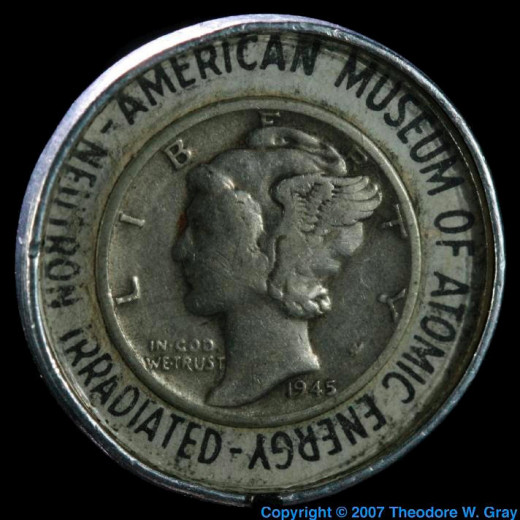
Mining Practices
Silver mainly occurs as inclusion in the sulfide ores of copper (chalcopyrite - CuFeS2), lead (galena - PbS), and zinc (sphalerite - ZnS). These ores are mined for their main constituents, namely, copper from chalcopyrite, lead from galena, and zinc from sphalerite. In the process of extraction of these main constituents (copper, lead, and zinc) silver is produced as a by-product. Around 75% of the total silver is produced from these three sulphide ores. Some other less important and rare minerals of silver are argentite, pyrargyrite, proustite, stephanite, tetrahedrite, kerargyrite, embolite, polybasite, bromyrite, and iodyrite. About 25% of the total silver produced in the world is from the ores which are mined only for the silver values. Practically no ore has silver as the main constituent though very few silver bearing ores do contain silver as the main value [1].
Silver is always associated with native gold (gold in the state of a free metal). The proportion of silver in native gold .varies greatly from different localities.To separate these metals from the rock Romans introduced the technique of hydraulic mining and roasting of gold-silver bearing ores.
In the process of extraction of silver the first step is to concentrate the silver bearing minerals obtained from open-pit mining or underground mining. The term open-pit mining is used to differentiate it from underground mining that requires tunneling into the earth. Open-pit mining methods are used when minerals or rocks are found near the surface of the earth. Underground mining methods are used where minerals occur deep below the surface or as veins in hard rock.
Sulfide minerals, the main sources of silver, are amenable to flotation for concentrating the mineral values. By flotation around 30-40 fold concentration of mineral values is achieved. In the mineral concentrates, thus achieved, lead concentrate (from galena) contains more silver than in copper concentrate (from chalcopyrite). Zinc concentrate (from sphalerite) contains the least silver. In general silver content in sulfide ores is less than 0.2% though some galena rarely contains up to 1% silver.
Extraction of Silver
Gold and silver are recovered from the ores containing predominantly native gold and silver in the form of concentrates mainly by (a) amalgamation or (b) cyanidation process associated with roasting.
Amalgamation Process
An amalgamation is a process in which clean mercury is brought into contact with clean gold and/or silver to form a solution of gold and/or silver in mercury (an alloy of gold and/or silver and mercury). Mercury can then be removed from gold and/or silver by heating the alloy and vaporizing it off. Gold and/or silver will remain behind. and can be refined to a desired high purity. However, for amalgamation process to work, gold and silver should be in finely divided form.
When gold and silver are encased in the gangue or surface coated, ultra-fine grinding of the material is necessary to liberate gold and silver particles from the mineral. The presence of clay, iron, and other base metal sulfides results in flouring of mercury. Flouring is the division of the mercury into extremely small globules. This gives it a white flour-like appearance. Any gold and silver that attached to the floured mercury is also lost along with mercury. To avoid flouring, grinding the material with alkali or lime is necessary. Flotation prior to amalgamation is required if the mineral contains carbon or graphite. The presence of sulfides of arsenic, antimony, and bismuth causes flouring and sickening of the mercury. If the mercury does not attach to gold and silver due to the presence of impurities like oil, grease, clay, manganese, and iron sulfates, and base metal and iron sulfides present on the surface of the mercury, it is called the sickening of the mercury. In such a situation, usually gold and silver can not be recovered by amalgamation process.
Amalgamation process for the extraction of gold and silver was widely used till the end of the first millennium. In America mercury was introduced for the first time in the 16th century to amalgamate Mexican gold and silver. The amalgamation process was widely used in Canada from the 1860s to1890s. Amalgamation process creates pollution. Mercury is a toxic metal. Mercury used in amalgamation process cannot be recovered as much as is necessary to ensure that the remaining mercury does not pollute the environment.
Cyanidation Process
Cyanidation is a process for the extraction of gold and silver from ores and was first developed by MacArthur Forrest in 1887. Since then this is the principal method of extracting gold and silver from ores. In this process, the ore is crushed to a very fine powder. Such powdered ore is heaped onto open-air leach pads put on a base of asphalt or impervious plastic sheeting. A dilute solution of cyanide, usually sodium cyanide, is sprayed through sprinklers on the heap. The cyanide solution percolates down through the heap for several weeks, forming cyano gold complexes. This solution, enriched with gold and silver, gets collected at the bottom into the pond termed as pregnant pond, from which it is pumped to the recovery plant. In the recovery plant, the solution containing cyano gold and silver complex is filtered off and the remaining rock pulp is separated. Zinc dust is then added to the solution containing cyano gold and silver complex to reduce the gold (III) oxidation state and silver (I) oxidation state to zero oxidation states (metallic states). Gold and silver are thus precipitated out as a high grade concentrate. This precipitate is further refined to get high purity gold and silver. The perfection of the cyanide process largely replaced amalgamation process.
This has proved to be an economical process even for the extraction of gold from low grade deposits in spite of the low recovery (60% - 70%) of gold. Since 1973 this process is used In United States for extraction of gold from low grade deposits at Placer Development's Cortez open pit in Nevada and at Pegasus Gold's Zortman Landusky mine in Montana.
The recovery of silver by cyanidation process is generally lower than that of gold primarily due to complex mineralogy. In early 1990s at the Rochester Couer d'Alene deposit in Nevada (one of the largest silver mines) extractions of 80% gold and 50% silver were achieved by cyanide heap leaching of crushed ore containing about 2-3 grams / tonne gold and 40-50 grams / tonne silver.This is an excellent example of silver-gold heap leaching operation [2].
.
It should be noted that cyanide is extremely toxic and must be handled with special care.
Some ores of gold contain sulfide minerals and/or organic matter. These ores become refractory and are resistant to the cyanidation process because sulfide minerals trap the gold and silver particles and organic carbon absorbs dissolved gold cyanide after cyanidation . Hence, oxidation of such ores is necessary. Oxidation is achieved by one of the following three processes
(a) roasting the ore at high temperature using air and/or oxygen followed by ultra-fine grinding of the ore. When the minerals are roasted, the base metals, such as zinc, iron, lead, and copper, from the minerals get converted to their respective oxides
(b) bio-oxidation using bacteria that promote oxidation in an aqueous medium
(c) pressure oxidation in an autoclave at high pressure and somewhat high temperature.
Oxides of these minerals, can then be easily removed into a slag in a subsequent smelting process.
Other processes of extraction of silver depends on the nature of the silver-bearing mineral concentrate. In this article, the processes of extraction of silver from the mineral concentrates of lead, copper, and zinc are discussed as these are the main concentrates from which most of the silver is produced. Silver is also extracted from the secondary sources.
Silver bearing mineral concentrates of lead, copper, and zinc are obtained by froth flotation process as described below.
Sphalerite, chalcopyrite, and galena, the chief silver bearing ores, are always associated with a large quantity of gangue. It is, therefore, necessary to remove this gangue material to a very large extent and to concentrate the minerals with respect to zinc, copper, and lead. This is done by a froth flotation, a process by which various minerals can be selectively extracted. Crushing and grinding of the ore is necessary to break the rock into gangue and mineral and also to increase the surface area of the ore (powder form) which is a prerequisite for the effective separation of the mineral and gangue by froth flotation process. The finely ground material is mixed with water to form a slurry. The mineral is rendered hydrophobic by the addition of a suitable surfactant. This mixture of hydrophilic gangue and hydrophobic mineral is introduced to a water bath which is aerated creating bubbles. The mineral, being hydrophobic, rises to the surface forming a foam termed as froth. This froth is removed from the hydrophilic gangue. This is called a mineral concentrate which is to be further refined.
Recovery of Silver from Lead Concentrate (Parkes Process)
Parkes process is meant for the extraction of silver from lead mineral concentrate obtained by froth flotation process. Lead concentrate is roasted and then smelted to produce what is called a lead bullion. This lead bullion contains silver along with impurities such as gold, arsenic, antimony, and tin. Silver is extracted from the lead bullion by the Parkes process. In 1850 Alexander Parkes patented this eonomical process by which silver is extracted by using molten zinc. This works because silver is 3000 times more soluble in molten zinc compared to its solubility in molten lead. Thus when zinc is added to molten lead, silver and gold get extracted into zinc and float to the top of the lead bullion. This zinc-silver-gold layer is skimmed off. Zinc is then recovered by vacuum retorting (heating in vacuum to volatilize zinc) leaving back gold and silver. The remaining gold-silver-lead residue is treated by cupellation, a process in which the residue is heated to about 800o C in strongly oxidizing conditions. Lead gets oxidized and removed. Gold and silver, which form an alloy termed as dore, thus produced is refined by the Moebius or Balbach-Thum process. The residue from silver refining is treated by affination or parting to concentrate the gold content. Affination is a term used to separate gold (less than 30%) from silver by boiling with concentrated sulfuric acid. Partition is a term used to separate gold (less than 30%) by boiling with 30% strength nitric acid. Gold concentrate is further refined by the Wohwill process.
Recovery of Silver from Copper Concentrate
Copper concentrate (20% to 40% copper) obtained by froth flotation process is subjected to calcination, and smelting at about 12000C by adding silica and limestone. In this smelting process copper matte, containing about 70% copper as copper sulfide and iron sulfide, is produced. Copper sulfide is then reacted with oxygen (by blowing air through the molten mass) to produce copper and sulfur dioxide. Iron sulfide is converted to slag and is removed. Thus, in this process the by-products sulfur dioxide and slag are produced. The copper produced in this process is of 98%purity and is termed as blister copper. This blister copper contains around 97% to 99% of the silver present in the original concentrate. Blister copper is further refined electrolytically to get high purity copper metal. In the process of electrorefining, insoluble impurities, termed as anode slime, accumulate at the bottom of the refining tank. The anode slime contains precious metals like silver, gold, and platinum group metals along with other metal impurities having no economic value. These metals get concentrated in the anode slime compared to the original sulfide concentrate as copper and other metals are removed from the concentrate. In particular, silver present in the sulfide concentrate to the extent of 0.2% gets concentrated to around 20% in anode slime. This anode slime is smelted to oxidize almost all metals except silver, gold, and platinum-group metals. These metals termed as dore contains around 0.5% to 5% gold, 0.1% to 1% platinum-group metals and the balance silver. Anodes are cast of these metals. Electrolysis is then carried out using Moebius cell or Balbach-thum cell to get 99.9% to 99.99% pure silver at the cathode.
Recovery of Silver from Zinc Concentrate
Zinc concentrate obtained from froth flotation process contains lead, silver, gold and platinum group metals which are present in traces in original ore sphalerite. Zinc concentrate is then roasted and subsequently leached with sulfuric acid to dissolve most of the zinc as zinc sulfate. Silver, lead, gold, and part of zinc (5%-10% of the concentrate) remain insoluble as residue. This residue is melted to form a slag through which powered coke or coal is added and air is blown to reduce zinc to metallic form. Metallic zinc thus produced is removed from the slag by vaporization. In this process, lead gets converted to the metallic form in the molten state that dissolves silver and gold. This lead bullion is further treated to recover lead as described in the Parke process above. After removal of lead, gold and silver alloy is produced. This is then refined by the Moebius or Balbach-Thum process to produce high purity silver. The residue from silver refining is treated to concentrate the gold content. Gold concentrate is further refined by Wohwill process.
Recovery of Silver from Scrap
Photographic industries generate a large amount of photographic processing solutions and films containing silver. In fact, this is the major secondary source of silver. Silver is recovered from the processing solution by electrolysis while films are burnt and the ashes produced are leached to extract silver. Silver containing dust generated in the process of polishing and grinding the precious metals and the jewelry sweeps are generally smelted to produce impure silver, which is then electrorefined. Low grade silver scrap is also sent for smelting from which silver is recovered following the above mentioned methods.
Novel Method of Recovery of Silver from Low Grade Silver Scrap
In industries graphite crucibles are used for melting pure silver. Silver enters in the porous graphite crucibles and cannot be recovered completely even with nitric acid. These crucibles contain about 1% silver. They are disposed off after use resulting in loss of expensive silver.
Gold jewelry also contains silver to a considerable extent.
The author of this article has successfully developed an industrial process that can recover silver from such crucibles and also from any other secondary source of low grade silver and gold jewelry. Silver recovered from such secondary sources is of 99.9% purity without going through the electrolytic process. The process is highly economical and time saving.Interested readers can approach the author
Purification of Silver (Moebius and Balbach-Thum Processes)
The composition of the dore anode (anode made of dore) varies greatly depending on the source material. The dore anode contains about 80% to 99% silver and impurities like gold, platinum etc. In the electrolytic process, anode gets dissolved slowly in the electrolyte and from the electrolyte pure silver is deposited at the cathode. In this process anode mud is produced containing gold and other precious metals present in the dore anode. This electrorefining operation is carried out using either a Mobieus cell [3] [US Patent 3975244] or a Balbach-Thum cell [4,5]. The principle of electrorefining of silver in both the cells is the same. In both these cells, silver nitrate is used as an electrolyte. Hiigh purity silver (99.9% to 99.99%) can be produced.by these processes.
There are significant differences between these two processes. In the Moebius cell, the electrodes are placed vertically and in the Balbach-Thum cell they are placed horizontally. The Moebius cell requires 20% less floor space than the Balbach-Thum cell. In the Moebius cell, the anode material leaves stumps which have to be remelted, whereas the Balbach-Thum cell consumes all anode material. Moebius cell is a high-speed cell but needs an input of anodes containing at least 95% silver. Balbach-Thum cell having horizontal electrodes can be operated economically even with the anodes containing only 80% silver [3] [US Patent 3975244]. The Moebius cell needs small electrolyte inventory, low cell voltage due to closely spaced electrodes, and cathode scrapping is almost continuous and automatic. The Balbach-Thum cell requires low current density, has fewer maintenance problems, and anodes are tolerant to anode slime [4]. Other significant differences in the structure and in the physical requirements of the cells do exist between Balbach-Thum cell and Moebius cell [6].
Silver recovered by electrolytic process by Moebius or Balbach-Thum cell is not less than 0.999 fine (99.9% pure).
Few interesting pictures of silver crystals, silver turnings and silver bar are shown below.
Conclusion
Silver has the history of more than 5000 years. Due to advancement of knowledge in mining, metallurgy, and chemistry and in particular the pioneering works of Parkes, Moebius, Ballbach, and Thum it has become possible to get this metal in the purest form. Silver has tremendous applications besides in jewelry. Preparation of nanoparticles of silver is an advanced technology. All these aspects and applications of silver is a topic of a separate KNOL.
[1]. Thomas Crook, Economic Mineralogy: A Practical Guide to the Study of Useful Minerals, Published by
Longman, Green and Co.1921
[2]. Marsden J. and House L., The Chemistry of Gold Extraction, Edition 2, Illustrated Published by SME 2008.
[3] Mantell, Electrochemical Engineering , 4 th edition, McGraw Hill Book Company, New York 1960, pp. 166-173
[4]. Pletcher D. and Walsh, F. Industrial Electrochemistry, Edition 2, Published by Springer, 1990, pp 242,
ISBN 0412304104, 9780412304101
[5]. Thompson K., Theoretical and Applied Electrochemistry , 3rd edition, The Macmillan Company, New York,
1939, pp. 257-260
[6]. Butts A. and Cox C. D., Silver: Economics , Metallurgy & Use, Van Nostrand Company Inc, pp. 86-87
http://www.google.it/patents/WO2013090981A1?cl=en
© 2015 Discover the World

